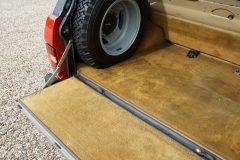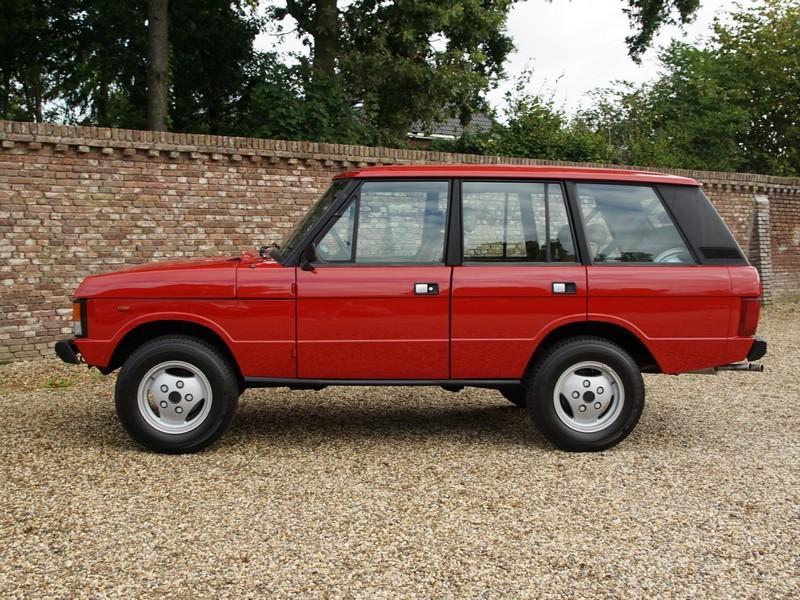England was at the cradle of the automobile world and has been ruined by the merciless laws of the "inhibiting lead." But beautiful things have been thought of. Such as a tough 4WD for men: the legendary Range Rover.
There was a market for it
The history of the Range Rover began in the 1960s, when Land Rover was looking for a way to get a better grip on the growing 4 × 4 market. A market that until then was only served by real work asses. At Land Rover it was thought that there had to be a market for working donkeys that looked like luxury horses. This created a whole new type of car and a very profitable business model. The result of all that brainstorming, the Range Rover, was introduced in 1970 in Cornwall and received with great enthusiasm by the press and public.
The Range Rover, the type - the brand was 'Land Rover' - was built on a conventional ladder-type chassis like the then Series Land Rover, but used coil springs instead of leaf springs, had permanent four-wheel drive, all-round disc brakes and was driven by a torque-rich and wonderfully sounding aluminum Rover V8 engine with 3528 cc (later: 3947 cc).
The first diesel arrived in 1986 and in 1989 the Range Rover became the first 4 × 4 with ABS. In 1992 the Long Wheelbase and SUV scoops followed such as Electronic Traction Control and electronically controlled air suspension.
We look at the newest range of Rovers with sincerely raised eyebrows
They are ... well. They are. But intuitively, they no longer have anything to do with their rugged primal father: the loosely disguised as a 'gentleman', rather bulky powerhouse, the Range Rover as it changed the face of the world in 1970.
In Den Beginne: 1969 - Prototype Range Rover Velar
To keep the highest secret prototype of the first Range Rover secret, the creators gave it the name "Velar," which is very cunningly derived from the Italian word "velare," which means "hide." The first 26 prototypes were even provided with a badge with that name, to keep the case as secret as possible.
1970 - The first production model of the three-door Range Rover, the original father of the SUVs
After successful tests with the prototypes and pre-production models, the Range Rover was shown to the general public. He was received very positively, thanks to his remarkable combination of rugged deployability, comfort and elegant design. It was the first car with permanent all-wheel drive, a continuous hood in the front fenders, a shared tailgate and a continuous waistline.
After 11 years, the Range Rover Classic was also released as a five-door version, which offered the ever-growing fan base even more options.
The second-generation Range Rover was presented in 1994 and was more luxurious than its predecessor, but it retained the design elements that have stood the test of time and that make the car instantly recognizable to this day, such as the iconic silhouette and the introduction of rectangular instead of round headlights.
Of course many Range Rovers were bought for 'the show' instead of 'the go'
Owning a Range Rover was a huge statement. But there were also many buyers - including the British nobility and landowners - who embraced the novice as a stylish commercial vehicle. After all, the early Range Rovers were true, robust 4WD all-rounders in the depths of their genes. This created two trends: Range Rovers were pimped and tuned to impress sunny boulevards. And there were Range Rovers who bravely grumbled along muddy trails and through streams, deserts and beaches. We have seen such a beach rider change very much in twenty years during visits to Cadzand Bad, which has now been annexed by Flanders. The last time we visited we missed the pale white salt eater, a situation we had seen coming for a few years. Old Range Rovers don't die. They just fade away '.
In Brummen we found an early Range Rover that was not pimped or mistreated
It is surprising to find such a utility vehicle + in such an immaculate original condition. The red Range Rover is a Classic Mk1 from 1983 with 5-door bodywork, a regular carburettor engine and a five-speed gearbox ... The Range Rover has driven only 56.138 kilometers and is in a super original condition. Apparently he was not allowed to trot next to the asphalt and must have made the neighbors very jealous at some point.
A classic Range Rover is a wonderful, tough classic.
But be very careful when purchasing. Because a Range Rover could have had a very tough first life. Therefore, never buy one of which you have not seen the bottom. And watch out for rust damage.
Wind tunnels are for wimps








The rims of the red Range are not original to me but from later models .. (Vogue)
I can still remember the white one from Cadzand. Was in my opinion a diesel engine and a rough bearded coachman on the goat. Nice to be reminded 👍
Wasn't the Willys Jeepster the first SUV in the world? Or was it the Wagoneer? Or Grand Wagoneer?
Or the Renault 16?
Or the 2cv sahara ?? 😜
Think the Jeep Wagoneer dates from 1962, later 1966 came the Ford Bronco and in 1969 the Chevrolet Blazer. So in my experience, the Range Rover is certainly not the original father of the SUV
The Jeepster dates from 1948 but is still a slightly different concept and can be compared with the Landrover.
But maybe we have to go even further back in time and come to the Chevrolet Suburban (1935 to the present)